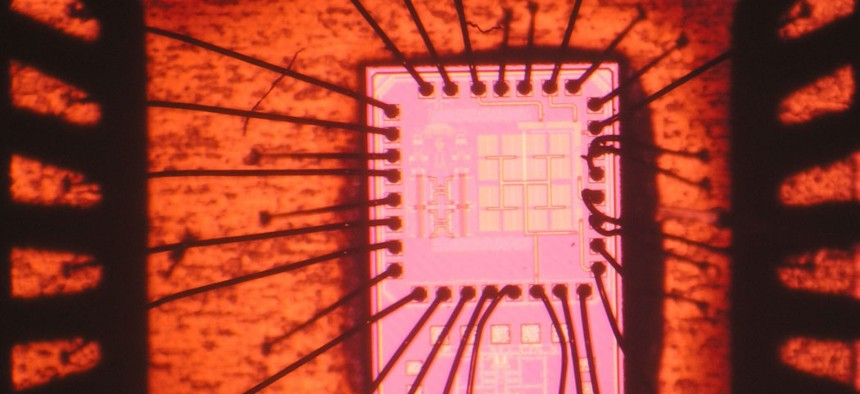DARPA project could double wireless capacity
A full-duplex process developed under the agency’s ACT program could cut the spectrum demands for wireless communications and radars in half.
Pentagon-funded researchers have achieved a breakthrough that could double the capacity of wireless communications, leading to faster Web searches and downloads, by allowing devices to send and receive signals with a single antenna.
Smartphones and tablets tend to use at least two antennas for transmitting and receiving singals. But Columbia University electrical engineers Harish Krishnaswamy and Negar Reiskarimian, working as part of the Defense Advanced Research Projects Agency’s Arrays at Commercial Timescales (ACT) program, have managed to miniaturize the electronic components and get radio frequency signals to work in both directions via one antenna, DARPA said in a release.
As DARPA explains, two-way RF systems require that transmission and reception be staggered so they don’t interfere with each other, which can slow down communications. It can also require that they use two different frequencies, which takes up more of the electromagnetic spectrum—and more efficient use of the spectrum is something the Defense Department has put a high priority on.
The new research under the ACT program, allows for full-duplex communications for mobile devices and radar systems, DARPA said. In the case of the latter, it could help eliminate blind spots that can occur when moving between transmission and reception modes.
“This new circulator component could enable full-duplex systems that let you speak and listen all at once,” said William Chappell, director of DARPA’s Microsystems Technology Office. And, of course, cutting the frequency needs in half means that, “full-duplex communication has the potential to double a network’s capacity,” Krishnaswamy said.
RadioMap Shared Spectrum Access for Radar and CommunicationsNEXT STORY: Army speeds up its battlefield satcom





